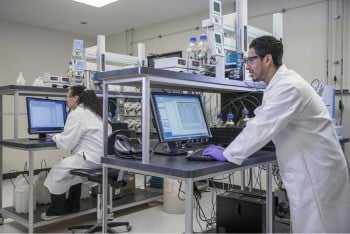Crowdfunded science: Now you can fund discovery

Most scientific research published these days comes about in a fairly standard and well-defined way: a researcher or group of researchers, typically led by someone with a PhD and typically tied to a university, secures grant money from a government institute (but also sometimes from a company conducting research in the field or a non-profit foundation) to do work, which is then published and, if successful and/or interesting, leads to new funding offers.
But in recent years, a new method of funding scientific research has emerged: you.
Private funding of science research is not exactly an original idea, of course. Early scientists such as Galileo were often funded by wealthy individuals, for example, but with the formalization of scientific research in the early 1900s—and the rise of corporations’ influence—scientific research funding gradually morphed into what we see today.
Private-funded research has mirrored the general rise in citizen science, which grew in the 1970s out of calls for the democratization of science and today capitalizes on the ability of everyday people to make significant contributions to scientific study, from butterfly counts to the role of underwater photography in coral reef studies.
Like almost everything else these days, the internet plays a major role in today’s citizen-funded research. The launch of GoFundMe in 2010 and the rise of cyberbanking made it easy for anyone, anywhere, to contribute whatever they wanted to whoever they wanted. GoFundMe makes its money by collecting a processing fee and a donation fee but does not skim donations.
In academia, there have long been criticisms that the way research is funded can be harmful not just to ignored scientists with good ideas but also to the basis of science itself. It would seem only natural, then, that scientific research and crowd-sourced funding were on a collision course, and sure enough, that collision has occurred.
“Even though it's still early in its evolution, crowdfunding for scientific research may significantly change the way science evolves moving forward,” notes The Balance.
Crowdfunding Platforms for Science Research
Early crowdfunded science initiatives included Useed, Consano, and MedStartr, with Kickstarter also being used by some researchers.
Experiment.com's Crowdfunding Platform
For those interested in genetics, most of the action can be found at Experiment.com.
As of August 2020, Experiment.com had supported the funding of 941 projects with pledges totaling $9.2 million. Slightly less than half of all projects launched on the site reached their funding goals.
The site details a four-step process for researchers: define the project and funding needs, obtain endorsements, submit the project to the website for review, and broadcast the project and receive funding support. Under Experiment’s rules, researchers play an all-or-nothing game—the project must reach its funding goal for money to be released, and barring that, pledges are not charged.
For their donations, funders get the satisfaction of helping push science along and a tax deduction. The researchers share their findings with donors directly, which can come in the form of journal publications, conference proceedings, academic posters, and more. If the campaign fundraising is successful, Experiment charges an 8% fee.
Research categories at Experiment range from political science to math, but genetics is well represented. Funded genetics projects genetic diversity in Atlantic red seaweed, searching for genetic clues in autism with family trio sequencing, conservation genetics of the endangered Seychelles magpie-robin, and searching for the genes that make dogs friendlier than wolves.
Success on platforms like Experiment is not universal, notes Science, which related the story of a researcher who was “eternally grateful” for crowd funding to collect snow samples in Utah. Students and postdocs had higher success rates than tenured faculty, and women had a higher success rate than men. The hallmarks of successful campaigns included active fundraising, endorsements, online engagement, the posting of updated lab notes, and nonmonetary perks such as visits to the research lab.
“The point is not to replace traditional [funding] mechanisms,” Henry Sauermann, of the European School of Management and Technology in Berlin, told Science. Instead, crowdfunding is like bonus money that fills gaps or expands access for researchers who “traditionally wouldn’t have had those grant opportunities.”
Want to learn more about crowdfunded science?
Sauermann and two associates recently published a paper on the subject for the National Bureau of Economic Research.






















